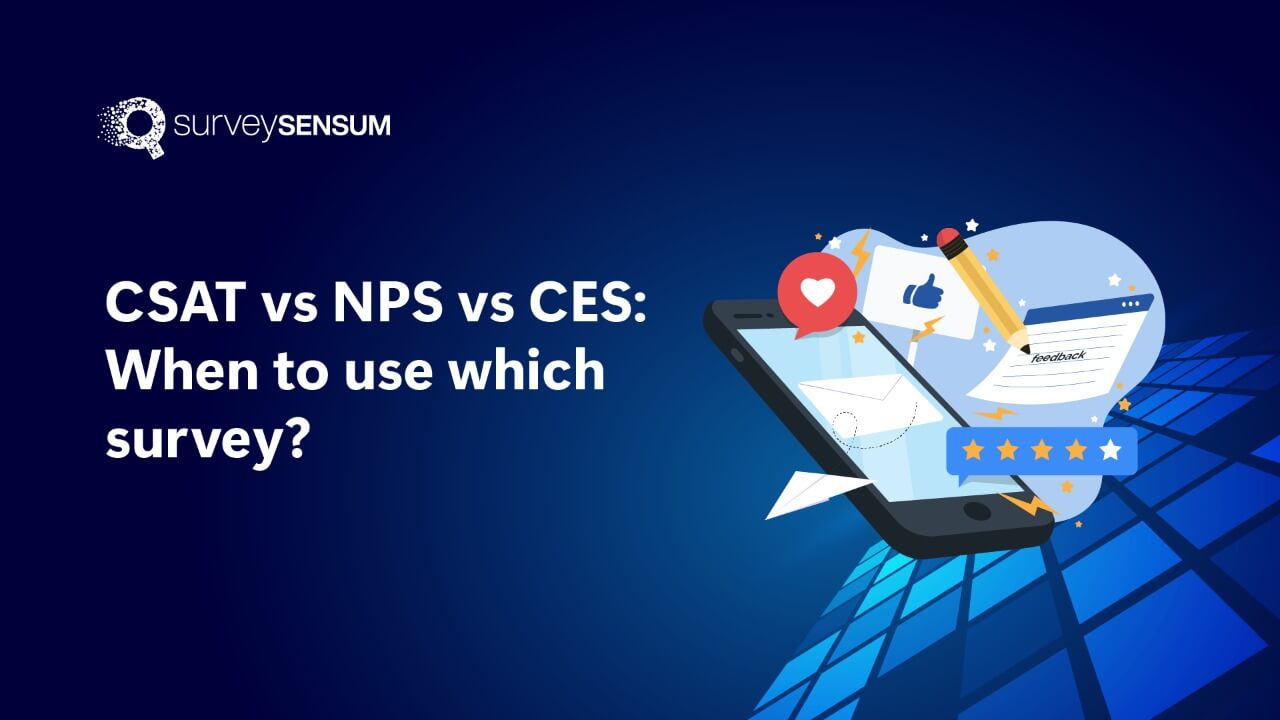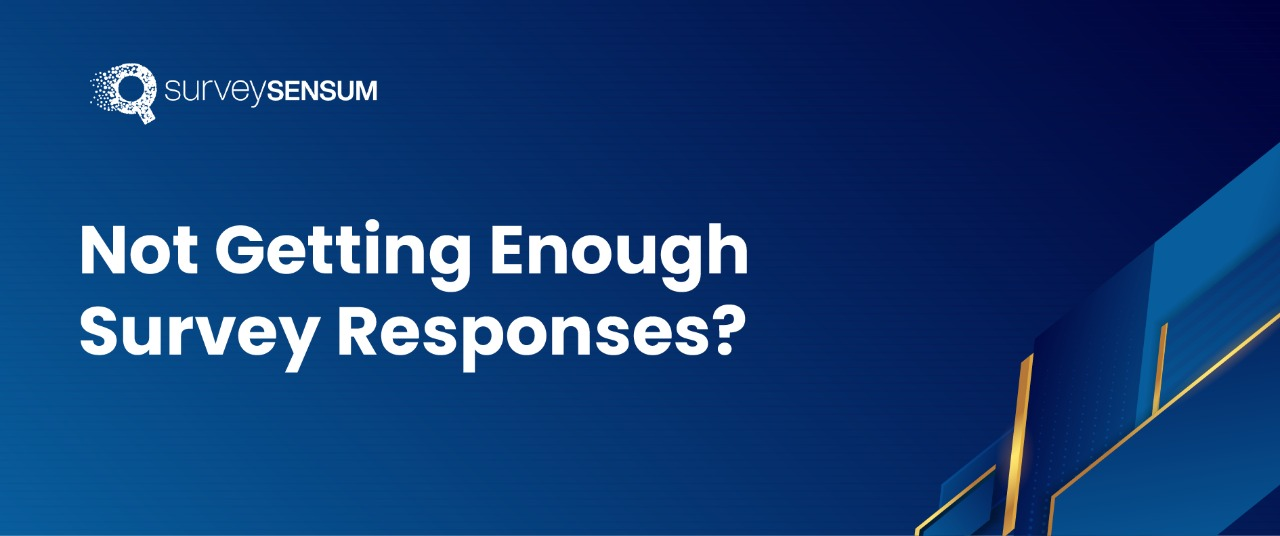

I recently bought a microwave from an eCommerce website.
Within 1 hour of the delivery, they sent me an NPS survey asking ‘How likely are you to recommend the product to your friends or acquaintances?’
I haven’t even unboxed it yet! Why will I recommend it to anyone?
This is one of the most common gaps of many CX programs.
Wrong Survey – Wrong Timings!
Instead of sharing an NPS survey, at this touchpoint share a CSAT survey asking ‘How was your delivery experience?’
Asking the right questions at the right touchpoint is incredibly important to deliver an exceptional customer experience.
But there are many kinds of surveys out there. NPS, CES, and CSAT are the most common ones. All three help you garner customer feedback on their experience with your brands or the product.
So knowing which survey to use at what time and asking the right questions has always been a challenge for CX practitioners. While one may be suitable for one use case, it might not be for the other.
So, CSAT vs NPS vs CES? Which one do you think is the best? And which one to send when? Let’s find out.
But, before all that, let’s understand each one in detail.
An introduction to NPS, CES, and CSAT
1. Net Promoter Score (NPS)
If you want to measure how loyal your customers are to your brand, then Net Promoter Score (NPS) is the metric for you. It gauges customer loyalty and helps prevent customer churn by asking one simple NPS question –
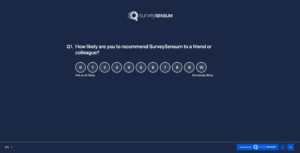
And customers are required to choose from a scale of 0 (not at all likely) to 10 (extremely likely) and are categorized into three segments.
- Promoters: The respondents who have chosen 9 or 10 from the scale. They are the most loyal customers of the brand.
- Passives: The respondents who have chosen 7 or 8 from the scale. They are not really happy with you and are most likely to switch to other brands.
- Detractors: The respondents who have chosen anything from 0 to 6 on the scale. They are unhappy customers and are about to churn. They should be focused on!
But, how to calculate NPS?
NPS score is expressed on a scale of -100 to 100. It can be calculated by subtracting the promoters’ percentage from the detractors’ percentage.

Why is NPS used?
NPS is an indicator of potential churn and brand loyalty. It helps in creating brand advocates over a period of time. By paying attention to the NPS score will help you:
- Gain increased revenue growth as companies with strong loyalty programs grew revenues by 2.5 times faster than companies that don’t have one.
Increase your customer retention rate by 5% which boosts your profits by 25% to 95%!
NPS is a relationship metric.
NPS measures the overall relationship of the customer with the brand. And not just that, you can easily benchmark yourself against your competitors using the NPS score of each industry.
When to send the NPS survey?
As discussed, NPS is a relationship metric. It shouldn’t be asked after every transaction. Instead, it should you be asked,
- After your customer uses your product or service entirely, or
- Quarterly or bi-annually to monitor the ever-evolving customer emotions towards the brand.
Higher the NPS, Higher the Customer Loyalty
Want to get started with SurveySensum?
2. Customer Effort Score (CES)
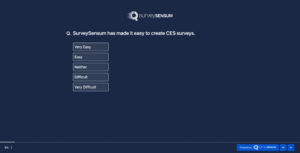
Customer Effort Score Survey, on the other hand, measures the effort put in by the customer to get an issue resolved, a task completed, a product purchase/return, or get the answer to their query.
It is a highly actionable metric and helps in measuring the ease of the product or service or any interaction with the brand.
There are multiple ways to ask a CES question. Here’s one example of a 5-point Likert Scale:
How to calculate CES?
CES is calculated by dividing the sum of customer effort ratings by the total number of survey responses.
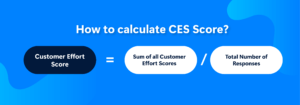
Why is CES used?
CES is used to identify how much time and effort is required by the customer to interact with the brand, use the product or feature, etc. It basically helps in resource optimization, improves tech or process, and boosts acquisition.
How? When customers have to put in minimal effort while using a product or service, they are likely to stay with the brand. In fact 96% of customers with a high-effort experience become more disloyal, while 94% of customers with low-effort experience intend to repurchase.
CES is a transactional metric.
Customer Effort Score is ideally asked after a specific interaction between the customer and the brand. It talks about the easiness of that particular task or interaction, making it a perfect transactional metric.
When to send the CES survey?
As discussed above, CES is asked immediately after an interaction/ transaction takes place between the brand and the customer. For example, after a service call, new feature use, ticket submission, etc.
Lower the Effort, Higher the Loyalty
Want to get started with SurveySensum?
3. Customer Satisfaction Score (CSAT)
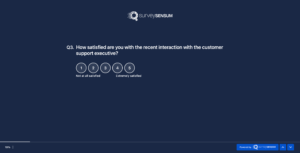
As the name suggests, the Customer Satisfaction Score survey measures the customer’s satisfaction with the overall product or a particular transaction. It is both a transactional and relationship metric. It can be asked anytime in the customer journey measuring the customers’ experience with the question,
It can be asked on numeric scales, visual scales, stars, emoticons, whichever best suits your brand’s voice.
Basically, it helps you understand how your customer feels throughout their journey with your brand; identifying every touchpoint that needs improvement. This helps you recognize the issues on those touchpoints, take action on them, and close the feedback loop with the customer.
How to calculate CSAT?
Your CSAT score can be calculated by the percentage of the top two boxes or by taking the average of the score.

Why is CSAT used?
CSAT helps you track the positive and negative moments, helping you fill the gaps in the customer experience and prevent churn. In fact businesses that improve their customer satisfaction see an increase in revenue by 4% to 8% above their market.
When to use CSAT?
Before sending the CSAT survey, you should consider what you are evaluating. For example, the CSAT survey can be shared immediately after sales, onboarding, or support interaction.
However, in the case of the product, you need to give sufficient time to the customer to fully experience it before sending the survey.
Higher the Satisfaction, Higher the Loyalty
Want to get started with SurveySensum?
Which is the right survey for your business goal: NPS, CSAT, or CES?
Using the right kind of survey also depends on what your company’s goals are. Before using any kind of survey, think of your goal. What do you want to drive? Why are you looking for a metric?
What is your company’s focus?
It can be
- Loyalty
- Performance
- Churn / new opportunity
- Benchmarking
- Improve productivity
- Proactive approach to reduce churn
- Acquire new customers and many more
Depending on these goals, you can select the right metric for your CX program.
Here’s an example.
If you want to boost Customer Loyalty, go for NPS.
It measures the
- likelihood to continue doing business/repurchase and
- willingness to recommend the company.
If you want to reduce the customers’ effort, go for CES.
It measures the
- overall customer effort score,
- the number of interactions required in handling issues, and
- the overall effort made by the customer in each service channel.
Similarly, if you want to increase your customer satisfaction, then go for the CSAT Survey
It measures
- the overall customer satisfaction score and
- the satisfaction of your customers with your products and services.
Now that we know that the metrics vary with each goal, let’s explore this further with an example.
Which surveys should be taken at which touchpoints in an insurance company?
Here is a great example of a customer’s renewal policy journey in an insurance company showcasing when to take which kinds of surveys.
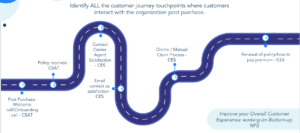
Let’s summarise: CSAT vs NPS vs CES
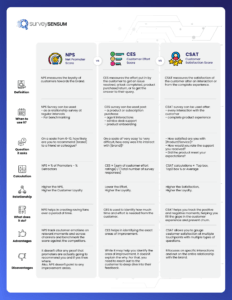
So which metric is better, CSAT, NPS, or CES??
The truth is NPS, CES, and CSAT, are all equally important metrics with their own purposes.
While the first is used for one use case, the second is used for the other. If used strategically, all three add value to your CX program.
But, the choice of metrics is not the major factor in a successful CX program. Acting on the gathered insights is.
Companies aggressively launch NPS, CES, or CSAT surveys, but only a few make use of their feedback. While all the surveys have their benefits, all are useless if you are simply gathering feedback and not taking action on any of them!
So the best way going forward is to choose the right survey based on the touchpoint/ transaction and ALWAYS act on the customers’ feedback.
Frequently Asked Questions
- Net Promoter Score (NPS) measures how loyal your customers are to your product/brand.
- Customer Satisfaction Score (CSAT) provides insights into how happy your customers are with your products and services.
- Customer Effort Score (CES) measures how effortless (or effort-full) is it for your customers to interact with your company.
CSAT measures your customers’ satisfaction at the micro-level and NPS measures loyalty at the macro level. And since both are core elements coming under customer experience, combining both survey results will be beneficial for you in having precise data on customer experience.
Net Promoter Score actually represents a metric that helps you understand the loyalty of your company’s customers. Also, NPS is one of the important KPIs to measure while considering improving your customer experience.






